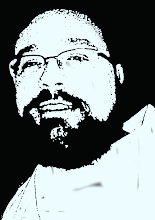The Holy Imperial Russian Orthodox Church is an autocephalous reestablishment of the true Imperial Church of Rusland that existed before the fall of the Russian Tsars in 1917. Based on more than 1,000 years of tradition, our church wishes to reawaken the image of Russian Christianity founded upon the inspirations of Tsar Peter the Great, whose current heir, Mikhail Ivan Freyovich Yngling-Romanov {Tsar Peter Alexander Mikhailovich Romanov}, is the first to appoint a Patriarch to the Imperial Church since the 18th Century. With this authority, his Blessed Highness has also established a true Patriarchate to govern the spiritual matters of the church.
So far as we know, we have the first Patriarchate established in the Independent Sacramental Movement that flows from a valid historical tradition.
The genealogical research for our Holy and Blessed, Velikiy Knaiz was initiated many years ago by his birth mother, Elvira Juliette. Her research was conducted before the invention of the internet and required many visits to old churches and libraries in most of the countries in Western Europe. Her efforts were concentrated primarily upon the Yngling Dynasty of Scandinavia [for this family tree is well preserved] and its spread into the royal families of Europe. While extensive genealogical connections were reported to the monarchies of England, France, Germany, Austria and Switzerland, these family trees are not of primary importance. Recently, using available internet sources, we have verified and greatly expanded the scope of the genealogical work of Mikhail Ivan’s mother. The combined data is shown by the accompanying charts (see below) pertaining to the line of descent of His Blessed Highness.
Elvira Juliette reconstructed her husband's ancestry via oral interviews with Mikhail Igorovich’s mother and other Russian relatives immigrating to the United States after the assassination of the Romanov family. The pedigree chart derived from these interviews is presented with this short introduction, but we have found it impossible to verify through any existing birth or historical records listed on the internet for the Polyakov woman who bore a child from Alexander I in 1826.
However, while on a trip to St. Petersburg a few years back, we did have a chance to compare the facial features of Mikhail Ivan’s eldest son, Prince Aleksander IV, with paintings made of his reported ancestor, Aleksander I. We have included one very telling picture with this report demonstrating great similarity between the facial and body structures of both individuals. Some persons known to us who are knowledgeable in matters of reincarnation, via ecumenical symposiums of the Vajrayana and Qabalah, upon being shown the pictures, have given us their opinion that Aleksander IV is the reincarnation of Aleksander I. Whether or not this is actually the case is of no genuine concern to us, it is our opinion, however, that such physical evidence is sufficient to state officially that the Polyakov-Romanov family oral history is accurate as portrayed.
If you refer to the genealogical charts included with this report, you will see that Mikhail Ivan’s ancestors can be traced back quite easily into politically-based marriages arranged between Patrician families of the Roman Empire and the Vandal royal families. In fact, it is clear that Mikhail Ivan’s family tree flows directly into the great emperors of Rome, including Constantine the Great, Marcus Aurelius and Trajan.
Lineage to Constantine the Great is of particular interest to us for his mother was Saint Helen of the Cross and he decreed that Christianity would be the new official religion of the Empire.
Following forward the descendants of Constantine the Great, we will arrive at the Viking King, Halvdan Olavsson “Hvitbein”. He had a number of children whose descendants eventually coalesced into Olav Godfredsson, King of the Isle of Man and onto our Grand Prince.
His son, Oystein Halvdansson “the Mild” is the forefather of a princely family who was invited to rule over the Slavs near Kiev, Ukraine in the late 800s. The first Norwegian Prince to accept this invitation to rule was Riurik Hemmingsson. The Riurik Dynasty ruled all of Russia until the 1600s with the death of Tsar Feodor Ivansson II without issue. No other Riurik would agree to take the throne and eventually was given to Mikhail Romanov by vote of the nobles.
Mikhail Ivan is also a descendent of Riurik via Yaroslav the Wise’s daughter who was married and bore children to Harold III of Norway.
Based upon sound genealogical research, it is clear that Mikhail Ivan royal lineage is more extensive than any other claimant to the throne of all of Rusland or Russia, including the Ynglings, the Riuriks and the Romanovs, and so is the natural choice to rule should Ukraine and Russia decide to return to a monarchy.
His lineage also provides him authority to make changes in the original Kievan Rus church initiated by Vladimaar I of Kiev Rus, including modification of the responsible Patriarchy.
Below you will find the genealogical charts representing the descendants of His Blessed Highness Mikhail Ivan Freyovich Yngling-Romanov {Tsar Peter Alexander Mikhailovich Romanov} who has reestablished the true Patriarchate of the Holy Imperial Russian Orthodox Church.
The Royal Archivist Tharsamond
(Note: Please click one of the charts below to view. Lessor familial connections have been excluded in the interest of clarity.Kell Yngling-Riurik-Romanov Velikiy Knaiz Rusland Legacy Chart
Descendants of Constantine the Great of Rome Chart







